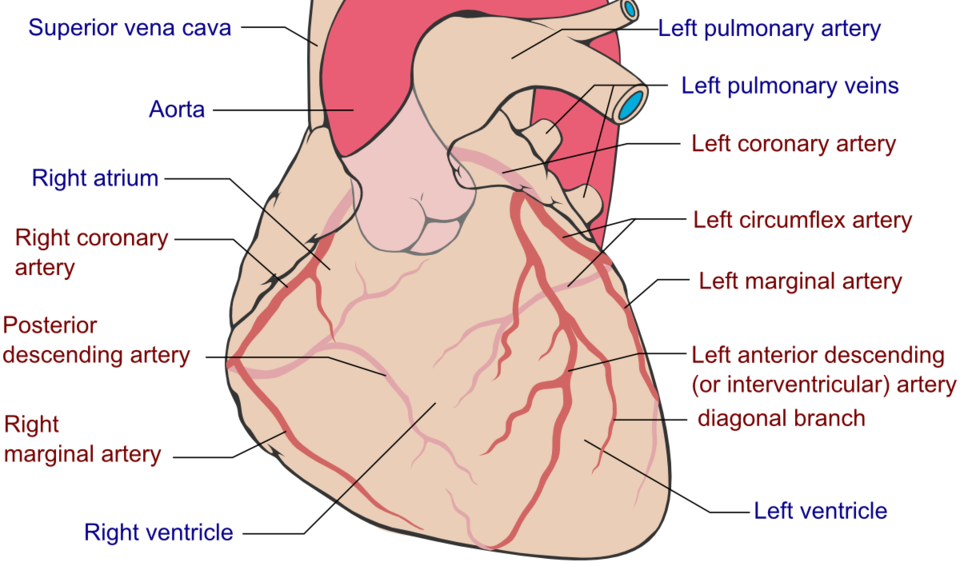Cardiology > Carotid Artery Dissection
Carotid Artery Dissection
Background
Carotid artery dissection (CAD) refers to a tear in the intimal layer of the carotid artery, allowing blood to enter the vessel wall and form an intramural hematoma. This leads to stenosis or occlusion of the vessel lumen, thrombus formation, and possible embolization to the brain, resulting in stroke or transient ischemic attack (TIA). It is a major cause of stroke in young and middle-aged adults.
II) Classification/Types
By Location:
- Internal carotid artery dissection (ICAD): Most common; occurs distal to the bifurcation.
- Common carotid artery dissection: Rare.
By Mechanism:
- Spontaneous: Often associated with underlying connective tissue disorders or vascular risk factors.
- Traumatic: Caused by blunt or penetrating neck trauma, chiropractic manipulation, or whiplash injury.
By Laterality:
- Unilateral (more common)
- Bilateral (can occur in genetic or connective tissue disorders)
III) Pathophysiology
An intimal tear allows blood to penetrate into the vessel wall between the intima and media or between media and adventitia. This leads to the formation of a false lumen, which can compress the true lumen and impair cerebral perfusion. The dissection can also serve as a source of thromboemboli, leading to ischemic stroke.
IV) Epidemiology
- Age: Most common in ages 30–50 years
- Sex: Slight male predominance
- Prevalence: Estimated at 2.5–3 cases per 100,000 people annually
- Comorbidities: Hypertension, migraine with aura, fibromuscular dysplasia, connective tissue diseases (e.g., Ehlers-Danlos, Marfan), recent neck trauma or manipulation
Etiology
I) Causes
- Spontaneous (idiopathic)
- Trauma (motor vehicle accident, sports injury)
- Neck hyperextension/rotation (e.g., chiropractic manipulation)
- Connective tissue disorders (Ehlers-Danlos syndrome, Marfan syndrome)
- Fibromuscular dysplasia
- Arterial hypertension
- Infection or minor cervical strain
II) Risk Factors
Age <50 years
History of migraine (especially with aura)
Smoking
Recent minor trauma or manipulation of the neck
Genetic predisposition (family history of vascular disease or connective tissue disorder)
Recent infection (upper respiratory or viral illness)
Clinical Presentation
I) History (Symptoms)
- Headache: Sudden onset, often unilateral and located periorbitally or in the temporal region
- Neck pain: Ipsilateral to the dissection, may radiate to jaw or face
- Transient or persistent neurologic symptoms:
- Hemiparesis
- Aphasia
- Visual loss or amaurosis fugax
- Facial droop
- Partial Horner’s syndrome: Ptosis and miosis without anhidrosis
- Tinnitus or pulsatile bruit (rare)
- Symptoms may develop hours to days after the dissection event
II) Physical Exam (Signs)
- Unilateral ptosis and miosis (partial Horner’s)
- Focal neurologic deficits depending on vascular territory affected
- Cervical bruit (occasionally)
- Neck tenderness or swelling in traumatic dissection
Differential Diagnosis (DDx)
- Ischemic stroke (other causes)
- Transient ischemic attack (TIA)
- Migraine with aura
- Cluster headache
- Subarachnoid hemorrhage
- Giant cell arteritis
- Cervical spondylosis or radiculopathy
- Trigeminal neuralgia
- Carotid artery aneurysm or thrombosis
- Vertebral artery dissection
Diagnostic Tests
Initial Imaging:
- CT Angiography (CTA) of head and neck: First-line test; detects intimal flap, double lumen, stenosis, or mural hematoma
- Magnetic Resonance Angiography (MRA): Useful alternative, especially in younger patients or those with contrast contraindications
- MRI of brain: To assess for ischemic infarcts, especially in the middle cerebral artery territory
Additional Tests:
- Duplex ultrasonography: May show turbulent flow or high-resistance waveform, but less sensitive than CTA/MRA
- Digital Subtraction Angiography (DSA): Gold standard but reserved for uncertain or interventional cases
- ESR/CRP: If inflammatory or vasculitic etiology suspected
- Genetic testing: In cases of suspected connective tissue disease
Treatment
I) Medical Management:
Initial Therapy:
- Antithrombotic therapy:
- Antiplatelets (aspirin or clopidogrel): First-line for most uncomplicated cases
- Anticoagulation (heparin followed by warfarin): May be used, particularly if recurrent embolism occurs; evidence does not clearly favor one over the other
Blood Pressure Control:
- Target normotension; avoid hypotension or severe hypertension
Pain Management:
- NSAIDs or acetaminophen for headache and neck pain
Neurologic Monitoring:
- Serial neurologic exams and imaging to monitor for stroke progression or resolution of dissection
II) Interventional/Surgical:
- Endovascular stenting: Considered for:
- Persistent symptoms despite medical therapy
- Expanding pseudoaneurysm
- Severe luminal narrowing with recurrent embolization
- Surgical repair: Rare, reserved for traumatic dissection with associated vascular injury or failure of endovascular approach
Patient Education, Screening, Vaccines
- Educate on warning signs of stroke (FAST: Face, Arm, Speech, Time)
- Avoid neck manipulation or chiropractic therapy post-dissection
- Refrain from contact sports during recovery
- Encourage medication adherence and follow-up imaging
- No routine vaccines required, but maintain general preventive care:
- Influenza annually
- Pneumococcal (based on age or comorbidities)
- COVID-19 vaccination per CDC guidelines
Consults
- Neurology: All patients with dissection and neurologic symptoms
- Vascular Surgery or Interventional Radiology: If invasive treatment needed
- Rheumatology/Genetics: If underlying connective tissue disorder suspected
- Primary Care/Internal Medicine: Long-term vascular risk management
Follow-Up
- Repeat imaging (CTA or MRA):
- At 3–6 months to assess resolution or stability of dissection
- Annual if residual abnormality remains
- Neurologic evaluation: Monitor for TIA or stroke recurrence
- Transition to antiplatelet monotherapy after 3–6 months if no recurrence
- Lifestyle modification: Smoking cessation, blood pressure control, physical activity
- Monitor for late complications: Aneurysm formation, restenosis, or recurrence
Recommended
- Peripheral Vascular Disease
- Aortic Aneurysm
- Aortic Dissection
- Aortoiliac Disease
- Vertebral Artery Dissection
- Giant Cell Arteritis
- Takayasu Arteritis
- Peripheral Arterial Disease
- Acute Limb Ischemia
- Arteriovenous Fistula
- Intermittent Claudication
- Hypertensive Vascular Disease
- Thromboangiitis Obliterans
- Deep Venous Thrombosis (DVT)
- Venous Thromboembolism
- Thrombophlebitis
- Varicose Veins
- Chronic Venous Insufficiency
- Stasis Ulcers
- Statis Dermatitis

Stay on top of medicine. Get connected. Crush the boards.
HMD is a beacon of medical education, committed to forging a global network of physicians, medical students, and allied healthcare professionals.
